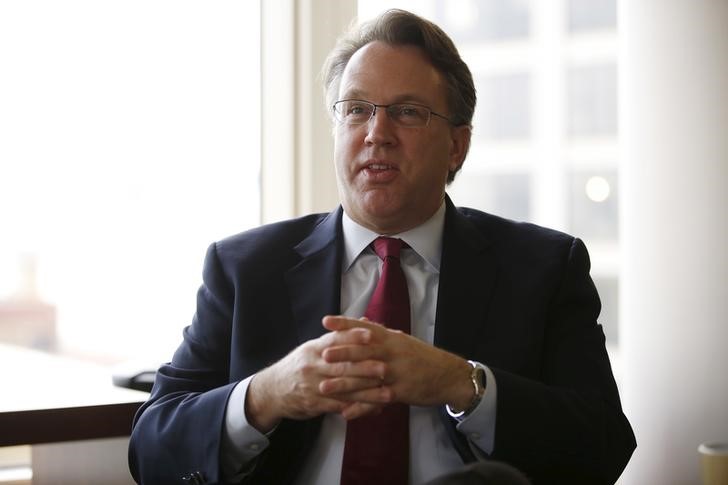By Yasin Ebrahim
Investing.com -- Federal Reserve officials Monday continued to push for higher for longer interest to bring down inflation that is running hotter than previously anticipated.
John Williams, president of the Federal Reserve Bank of New York, said Monday he expected inflation to moderate, but flagged drivers of underlying inflation, particularly in a red-hot labor market with “rapid” wage growth, as the most challenging.
The New York Fed chief forecast core PCE, the Fed's preferred inflation measure, to slow from its current level of 5.1% to between 3% and 3.5% next year, driven by slowing global growth and fewer supply chain disruption. That, however, is above the Fed’s September projections for inflation to drop to a range of 2.6% and 3.5%.
“Inflation is far too high, and persistently high inflation undermines the ability of our economy to perform at its full potential,” Williams said, reiterating the Fed’s message that ongoing rate hikes would be appropriate to dent growth and the pace of inflation.
The slowdown in growth is anticipated to push the unemployment rate to between 4.5% and 5% by the end of next year, Williams estimated. A Fed-induced slowdown --- at a time when global growth is on the ropes as China wrestles with a COVID-stricken economy -- has many worried about a potentially painful recession next year.
Treasury yields appear to have been pricing in the increasing prospect of a recession as a key part of the yield curve – the 2-year treasury yield over 10-year Treasury yield - remains deeply inverted, a harbinger for a recession.
But some Fed officials, who lean more hawkish and warn that markets are underpricing the risk of more aggressive Fed action, have pushed back against recession signals from the market, partly attributing the move in the yield curve to confidence that the Fed’s tightening will lead to disinflation.
“I think in this particular moment, this expected disinflation is partly leading to the yield curve inversion,” Federal Reserve Bank of St. Louis President James Bullard said on Monday.
“You have markets seeing a lot of inflation today, maybe over the next year or two, but not seeing very much inflation over the next five years or the next 10 years,” Bullard added. “You could interpret that as confidence in the Fed's programme that we're going to be able to get inflation back down to 2%.”
